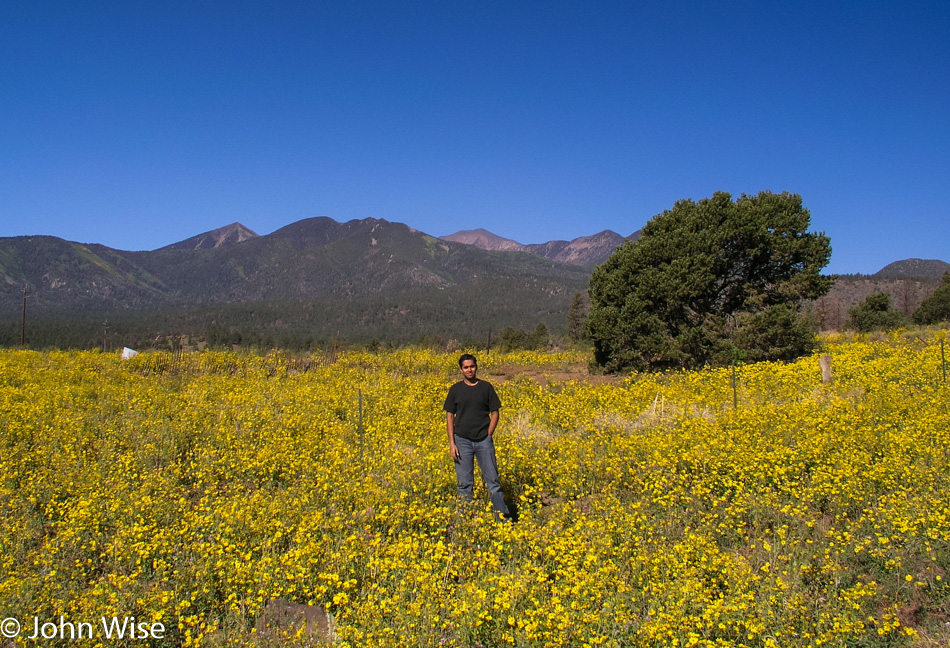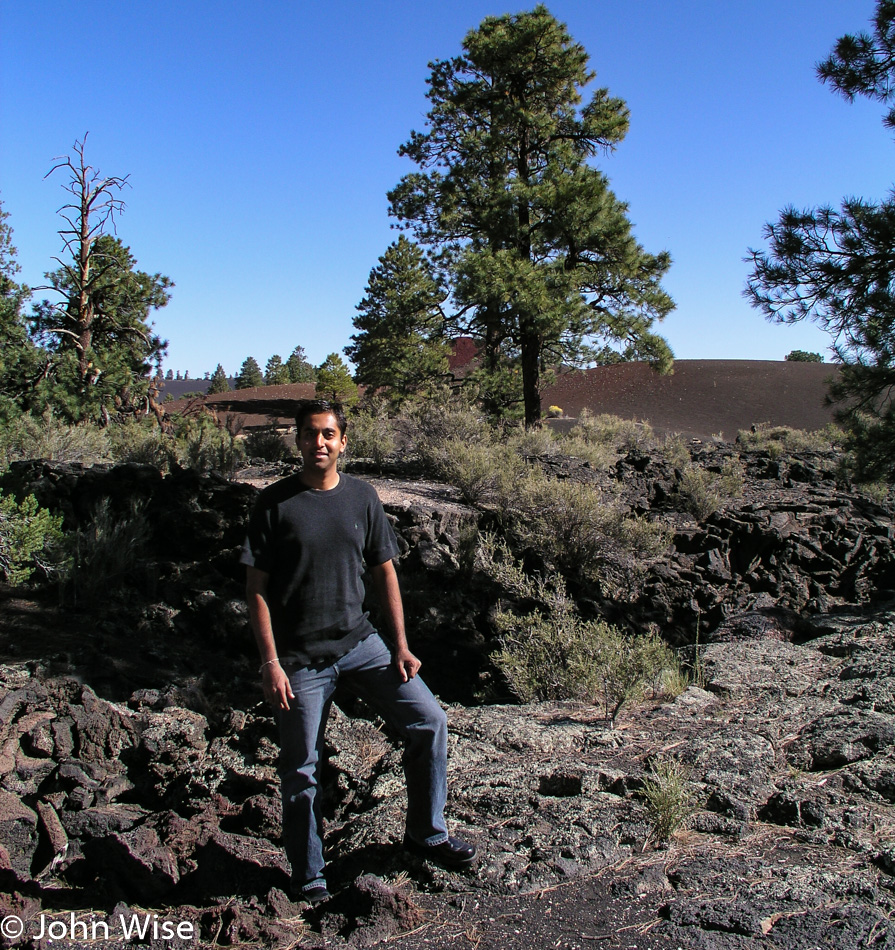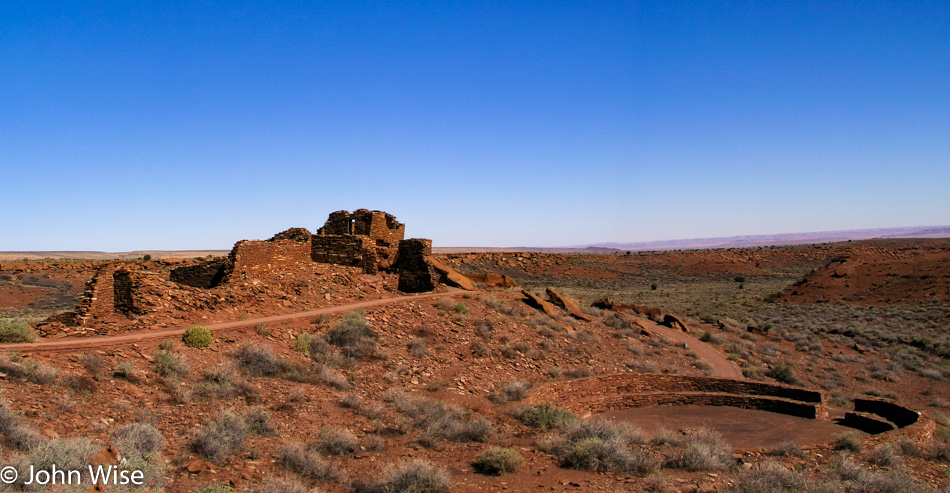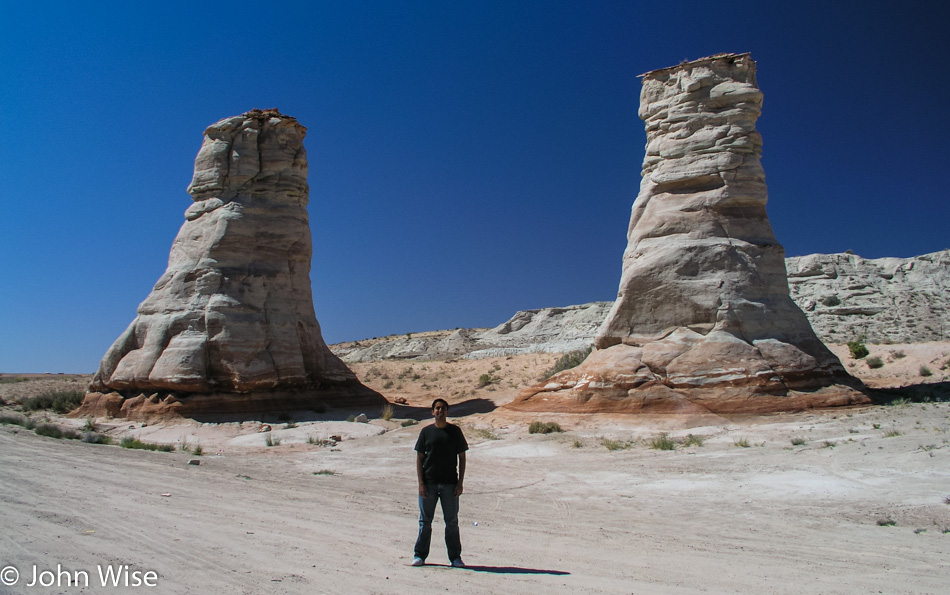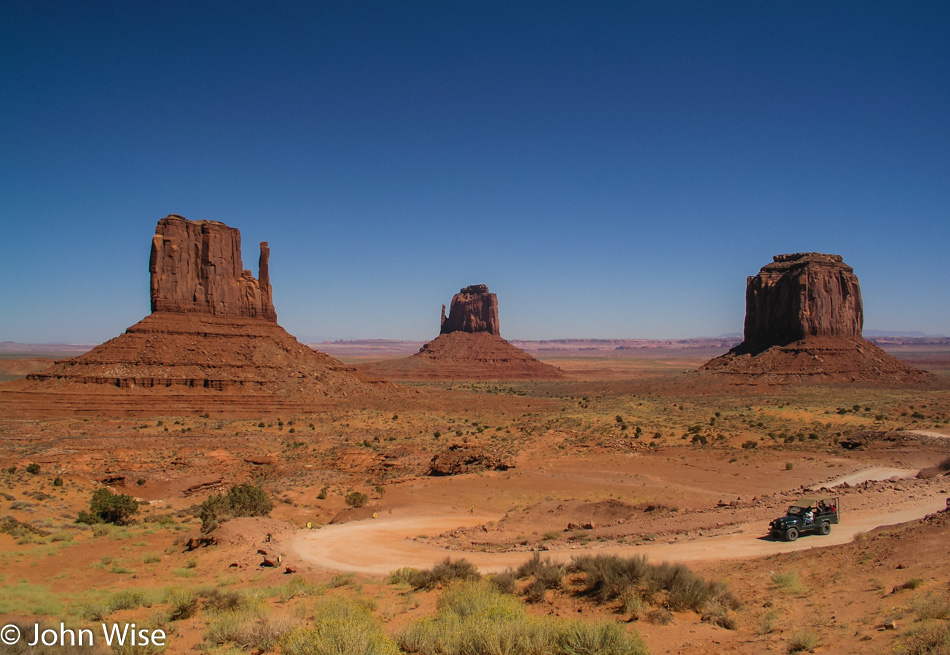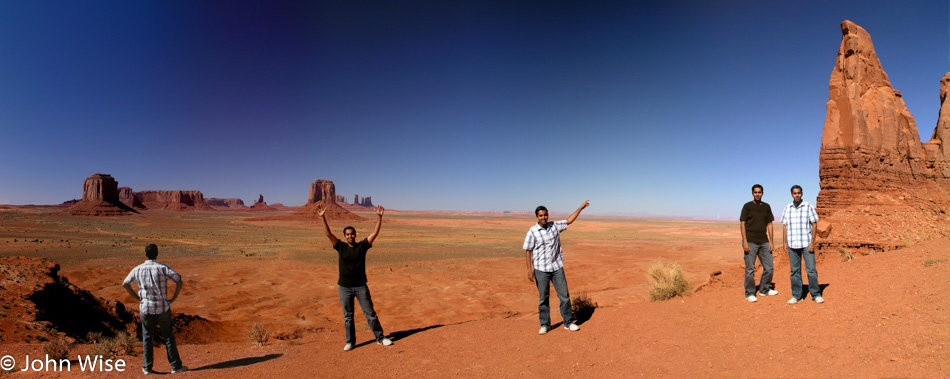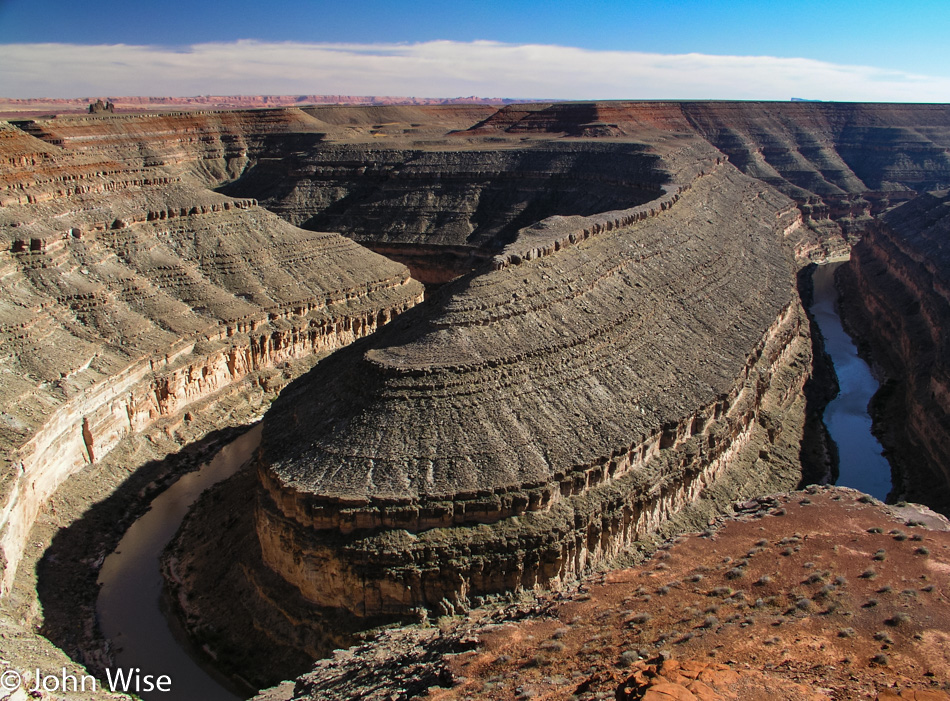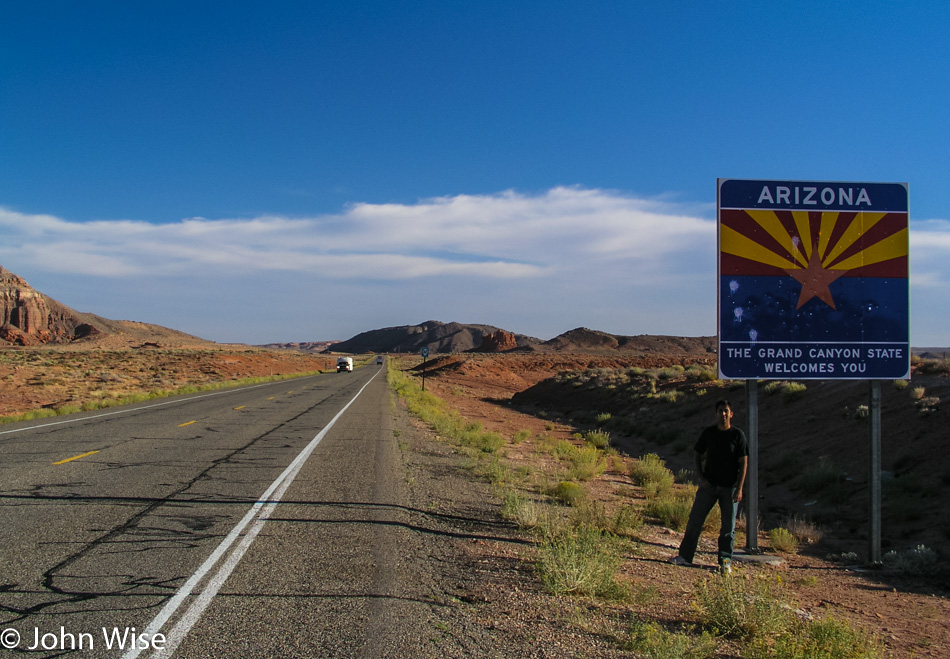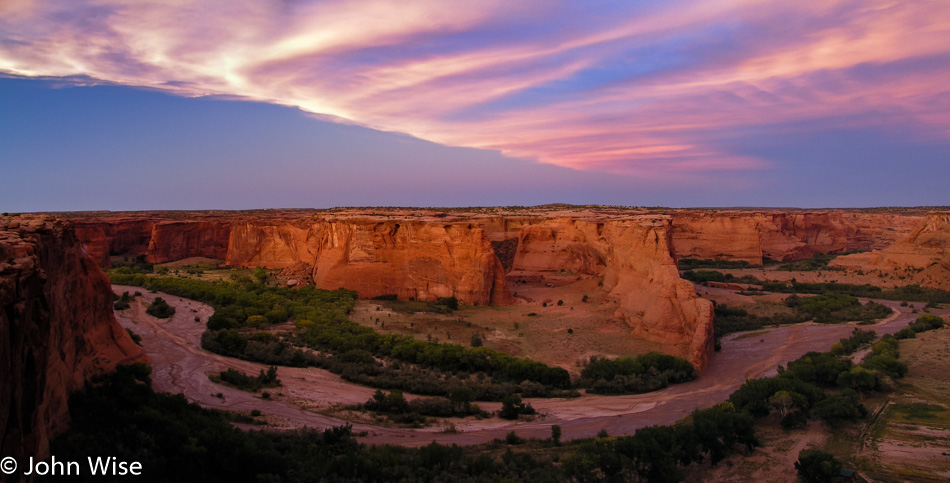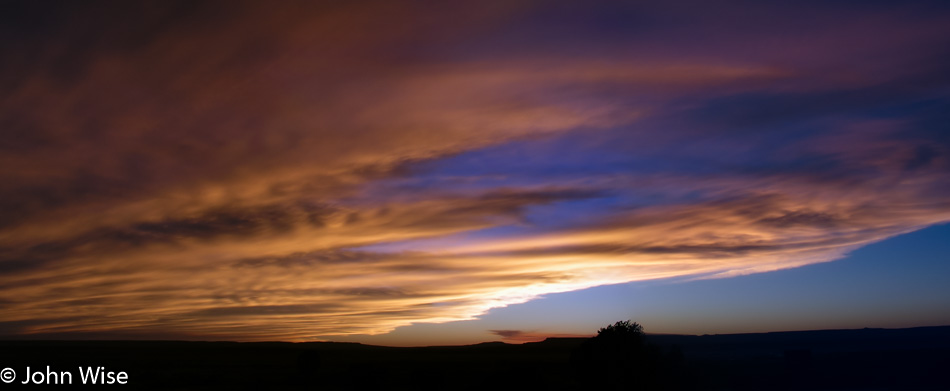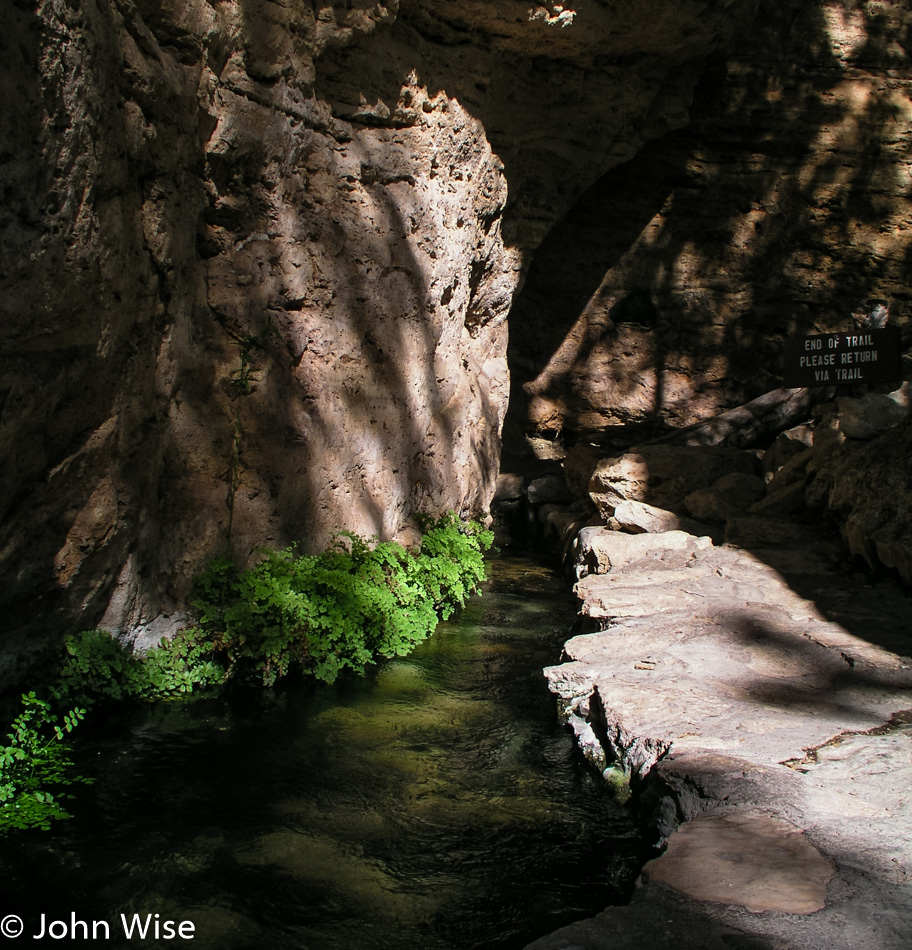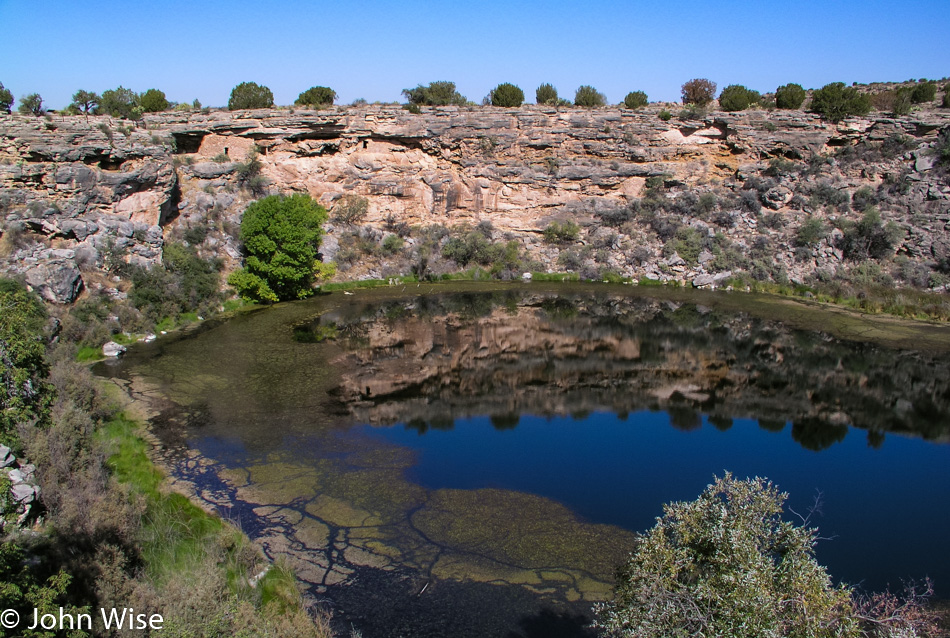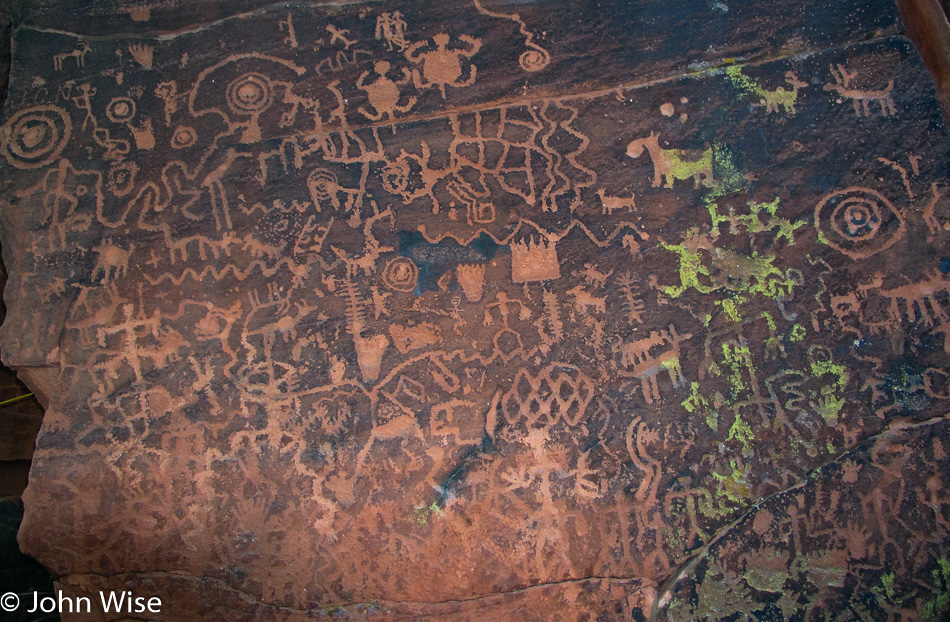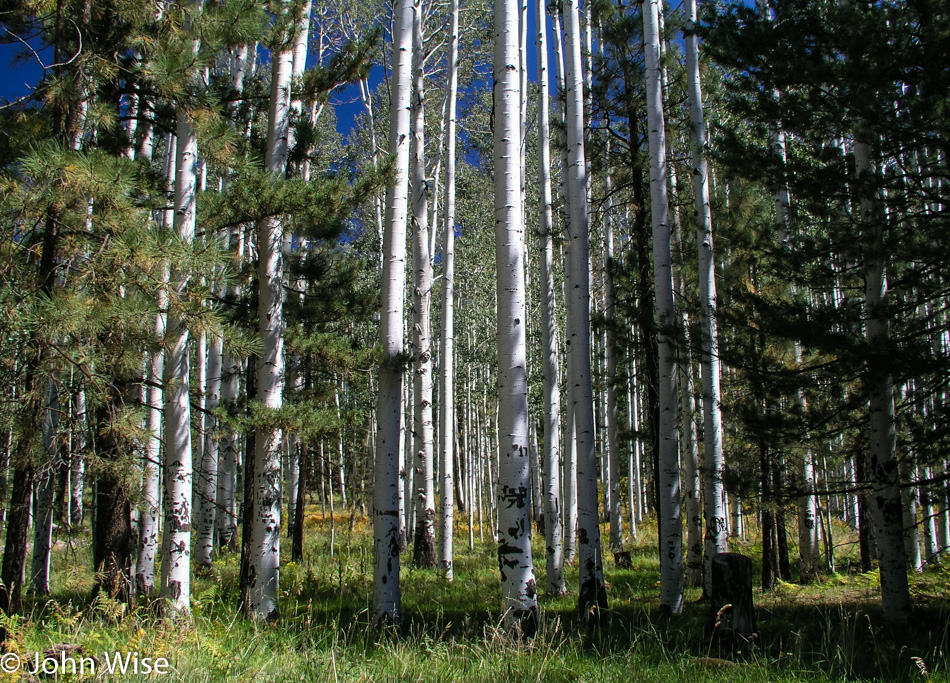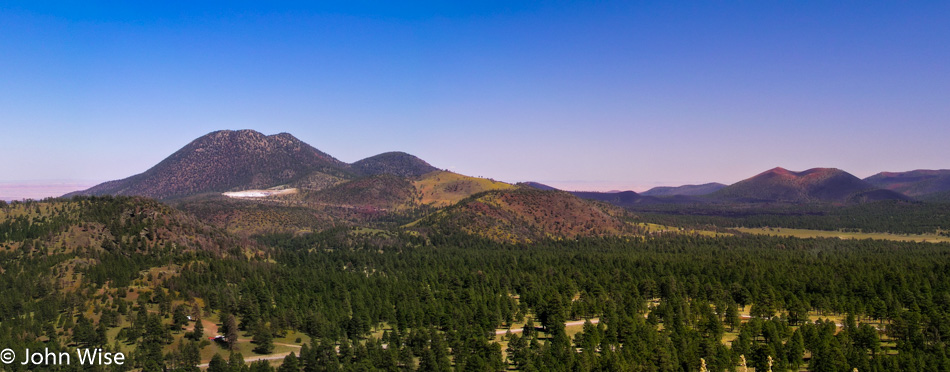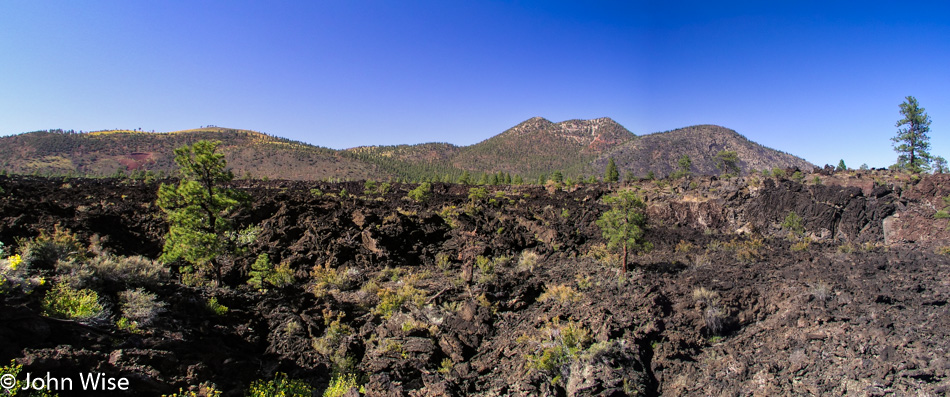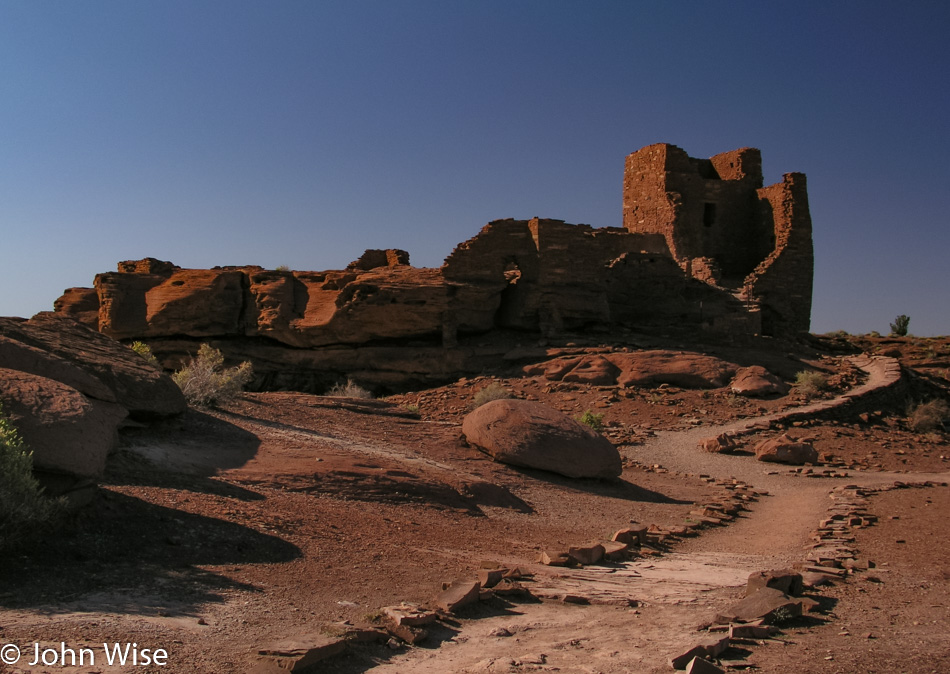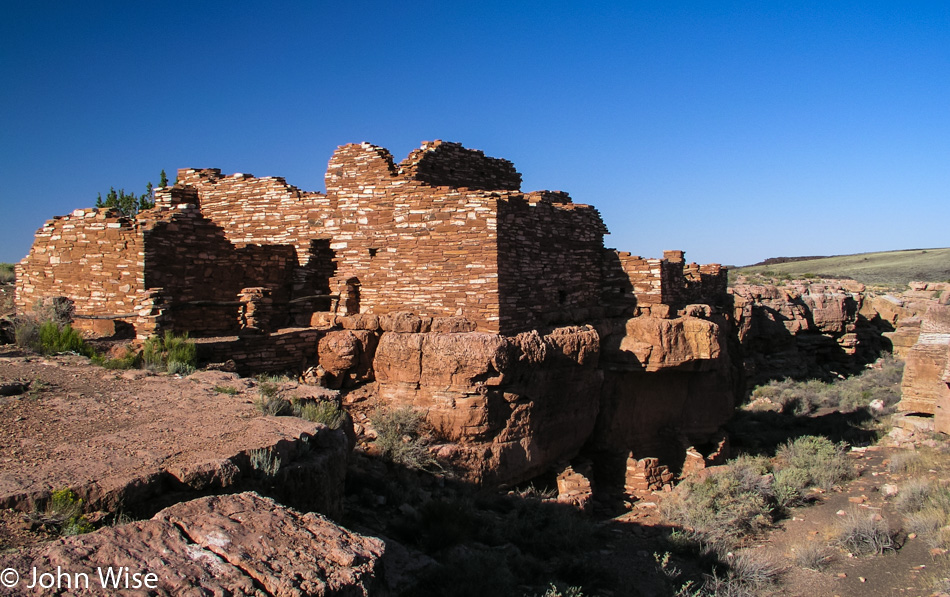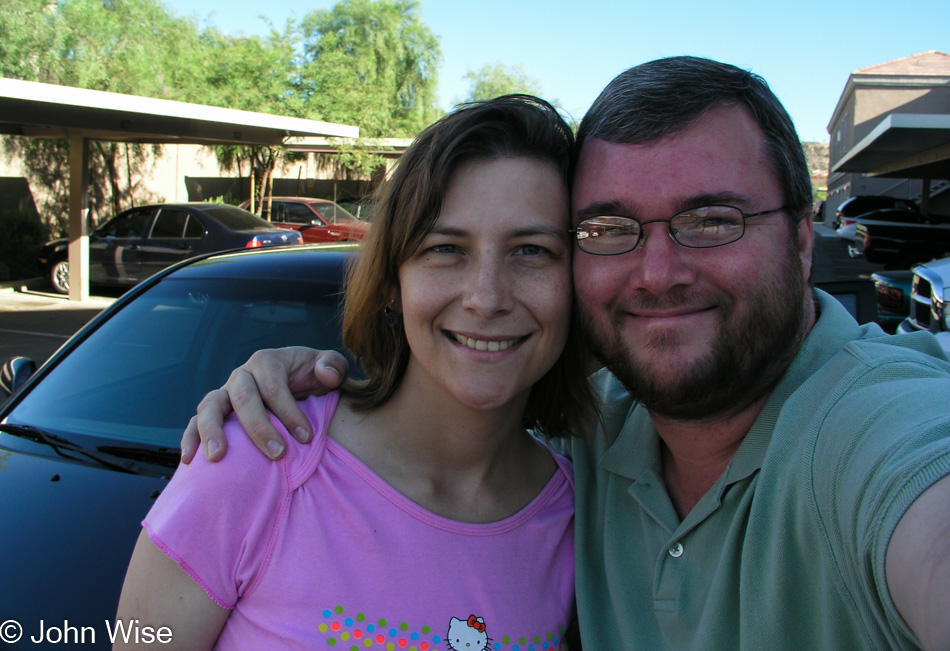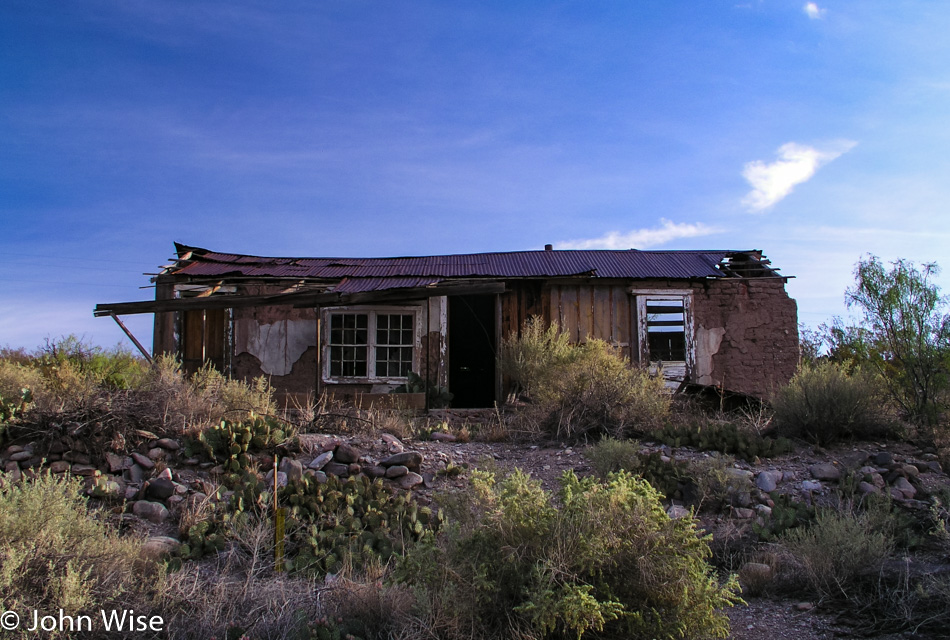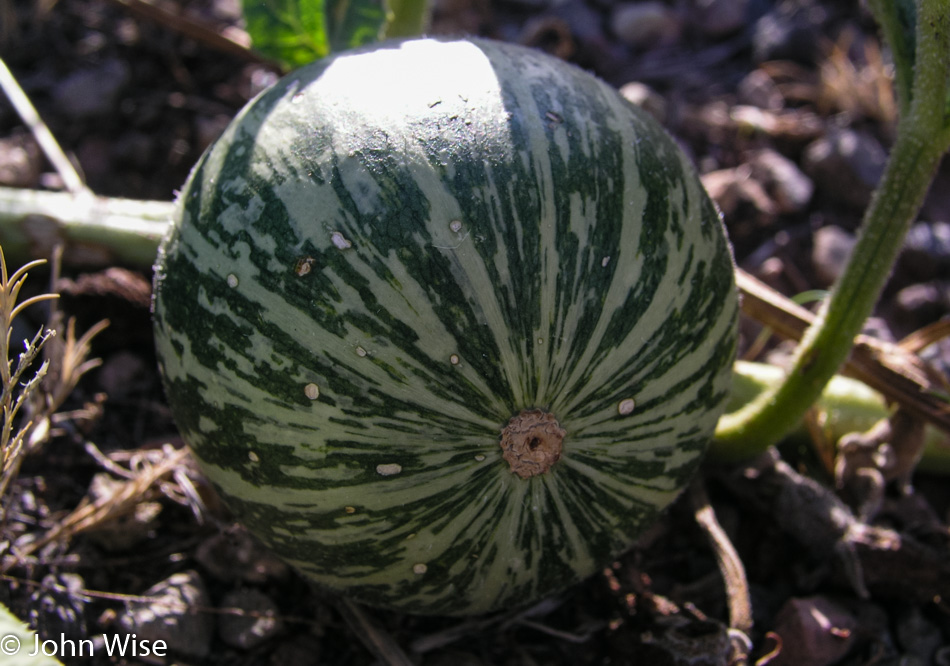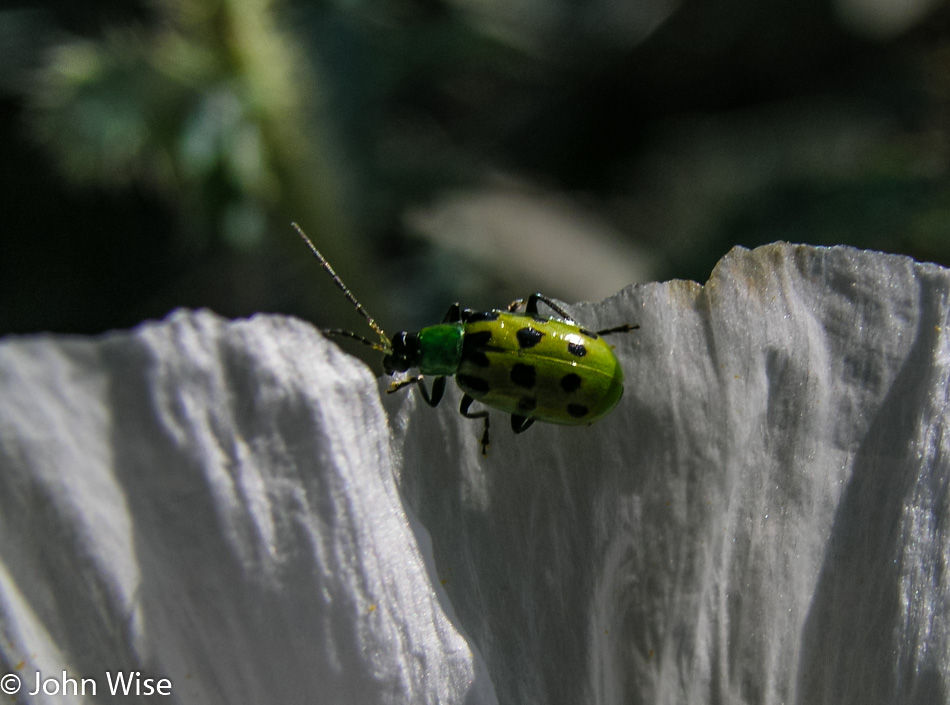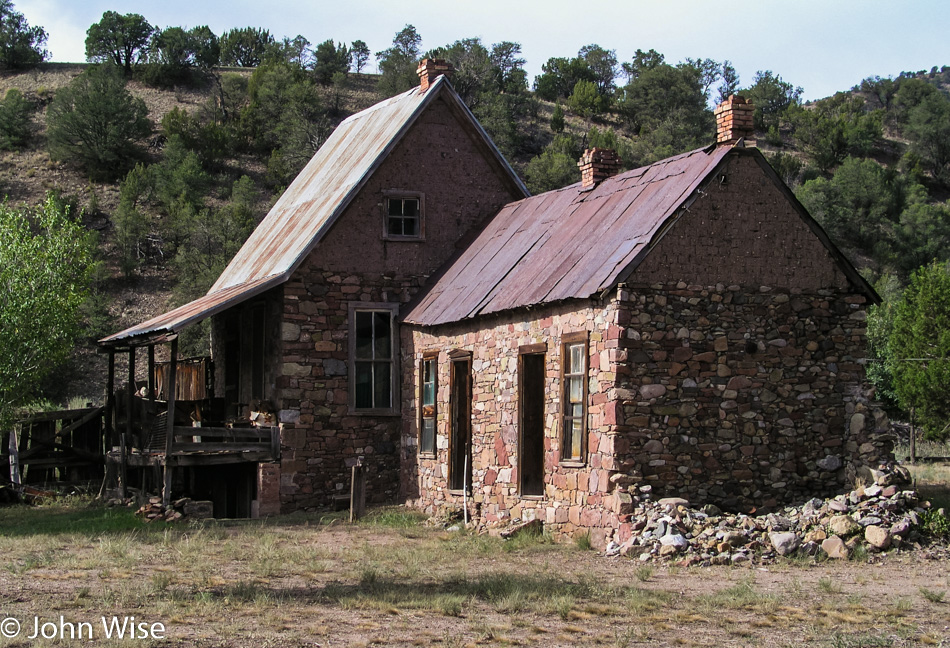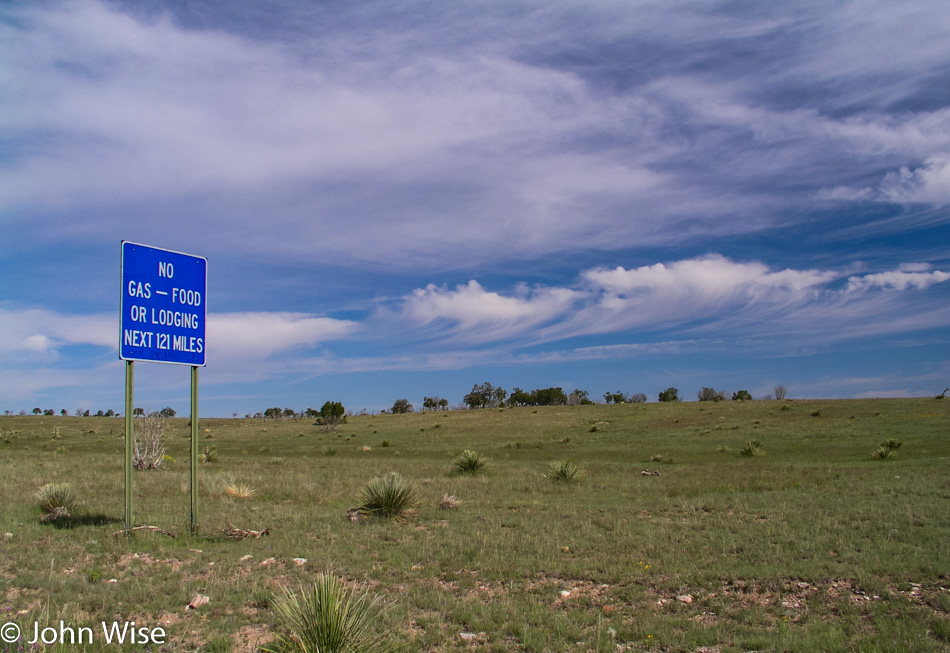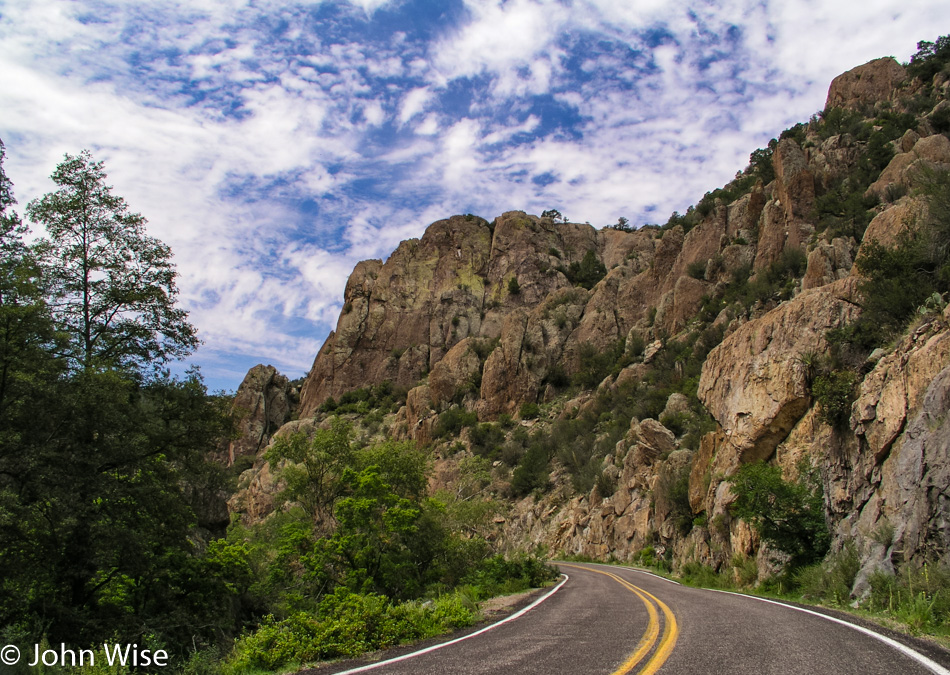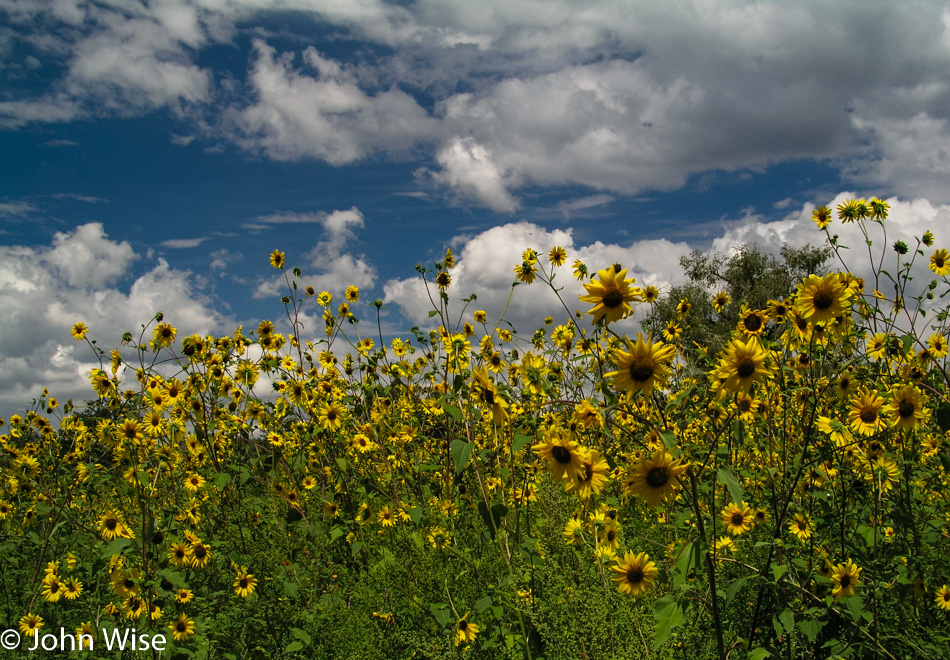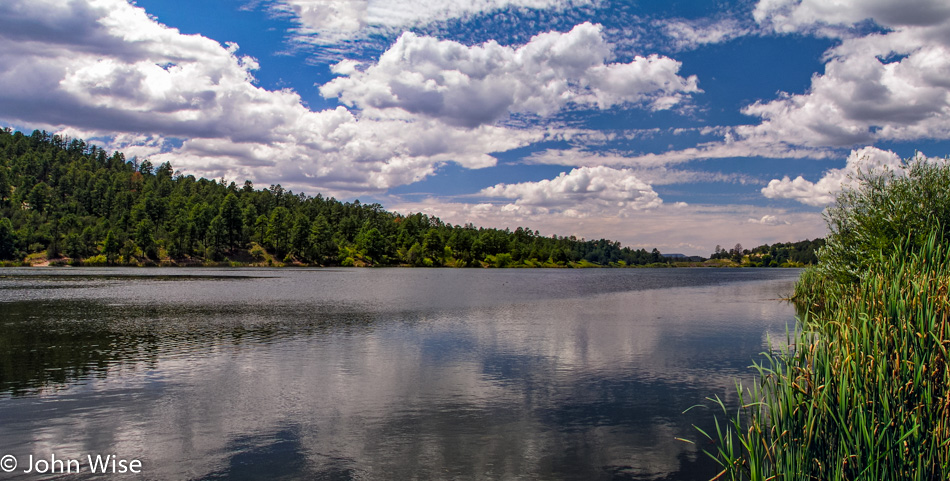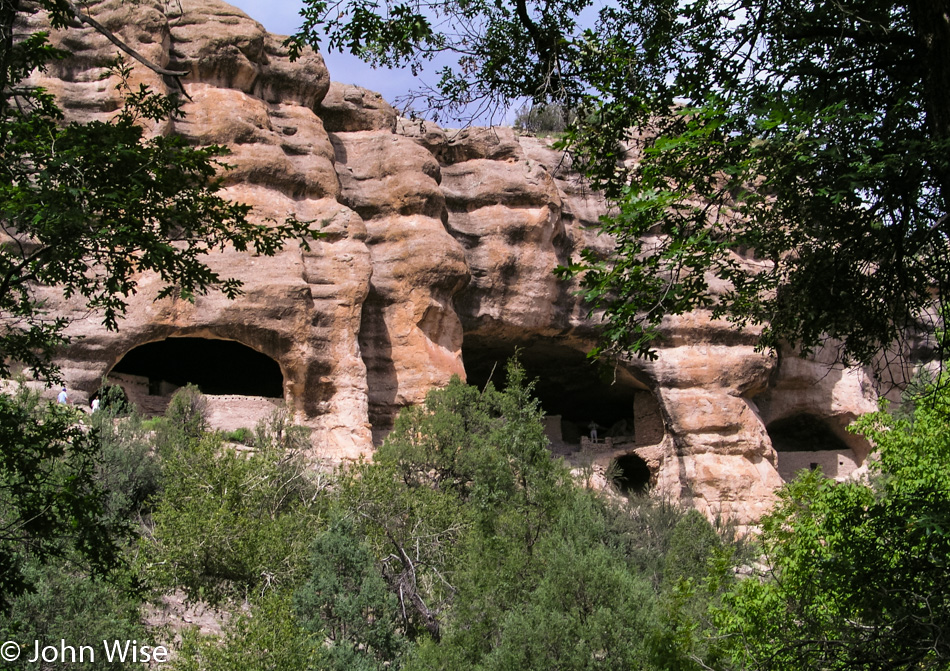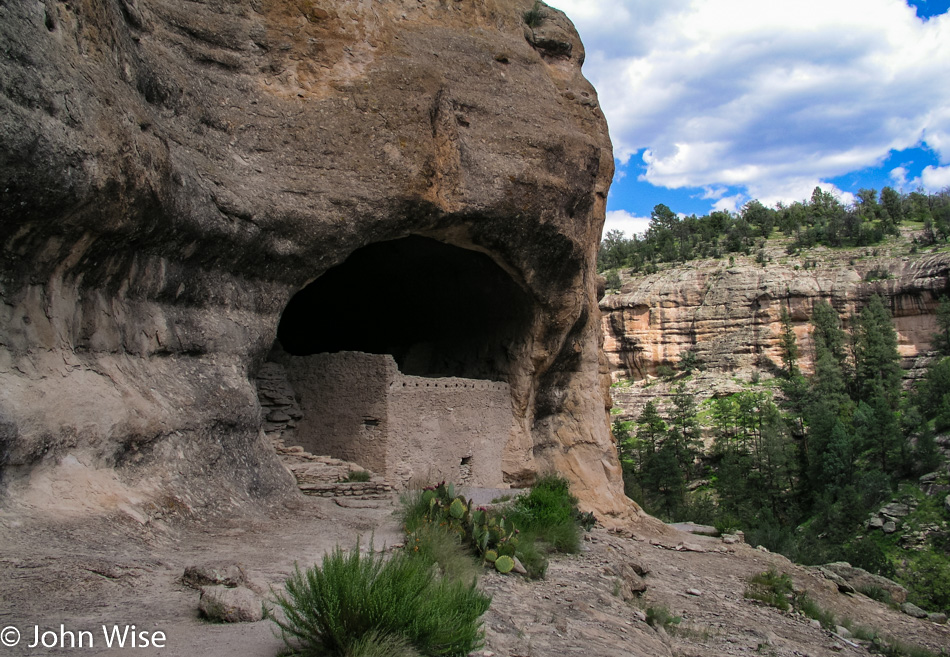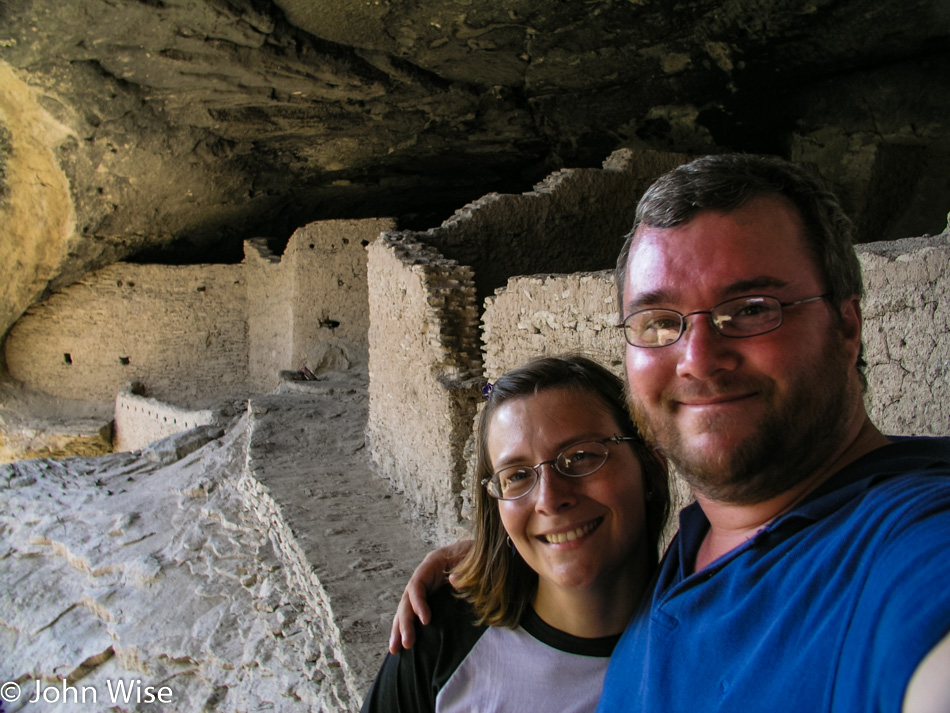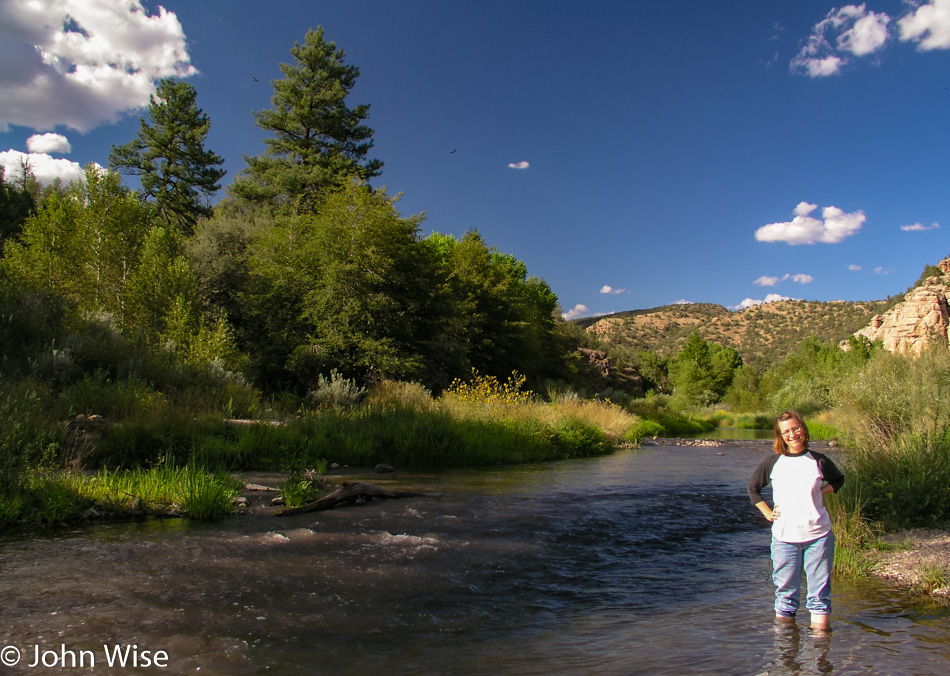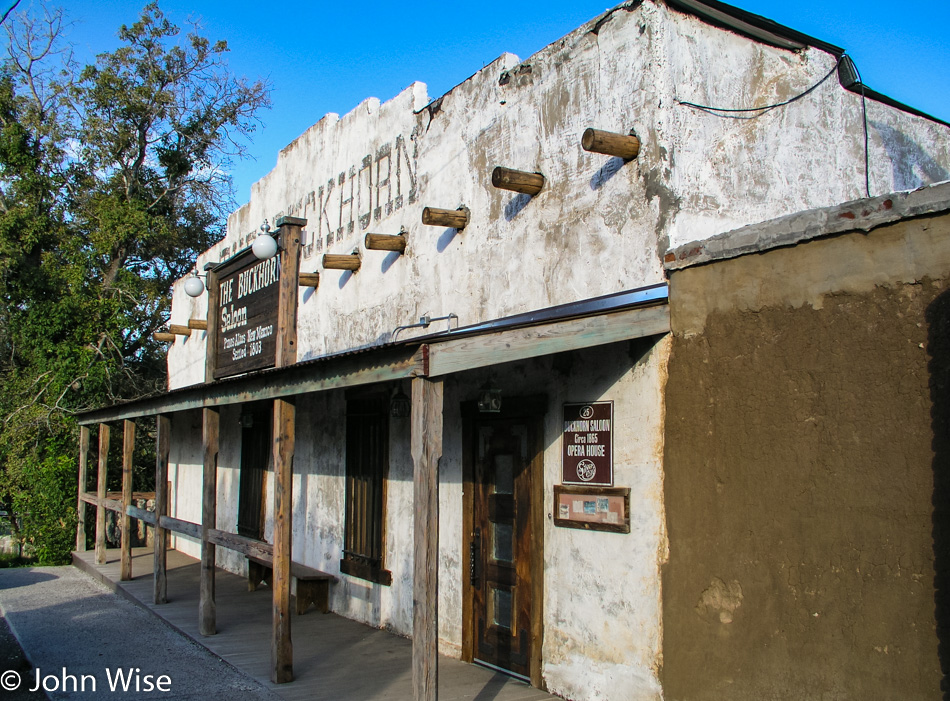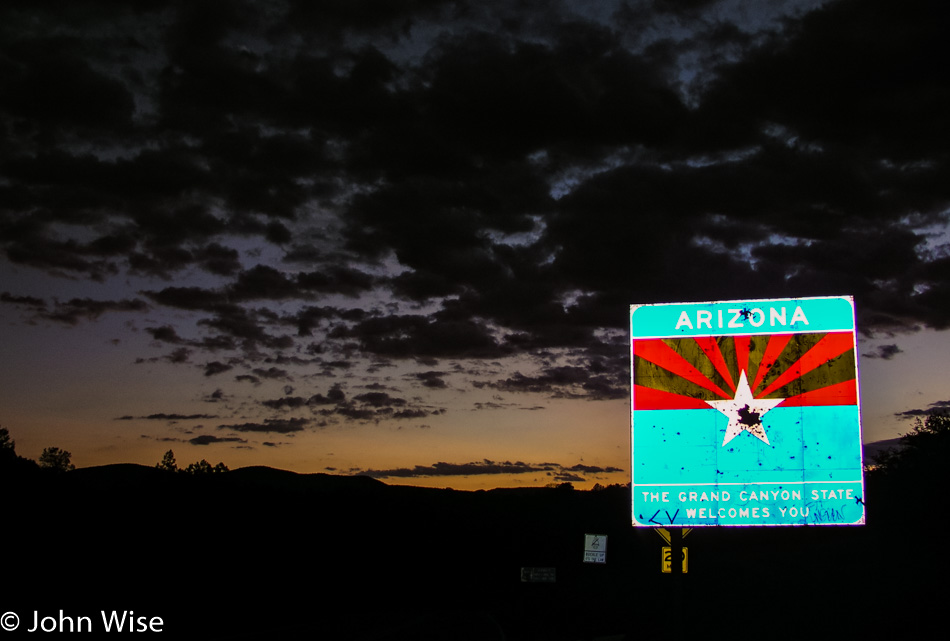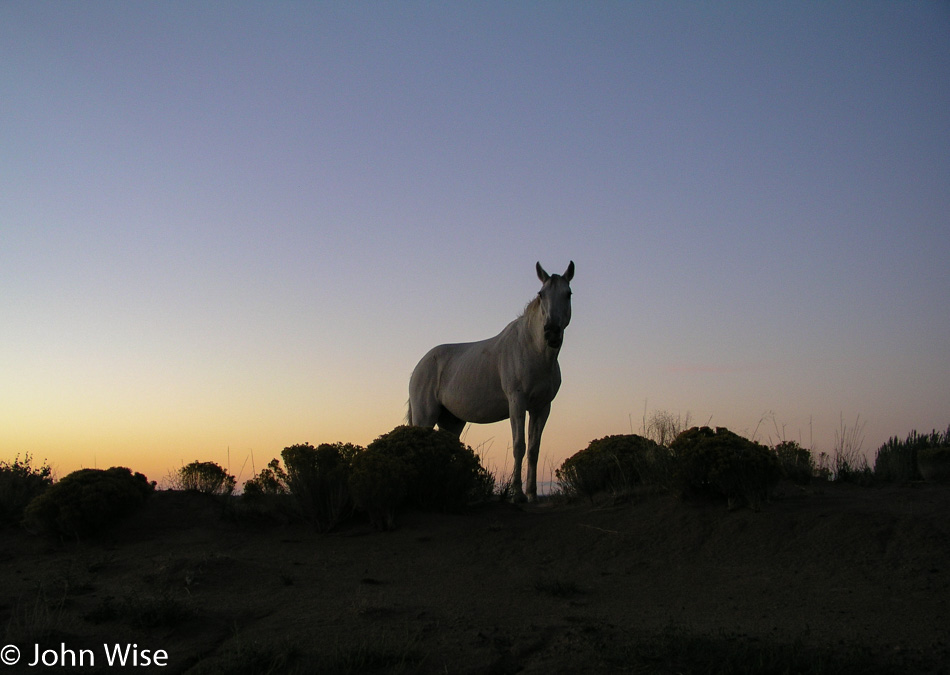
This is how mythologies are made. Yesterday we helped a runaway horse by preventing it from reentering the highway and looking for its owners. This morning, on our way down to Chaco Culture, we spotted this white horse on a rise next to a dirt road. It was as though the spirit of the white horse came out to greet us at the break of day to let us know it was looking over us as we’d looked out for one of theirs.
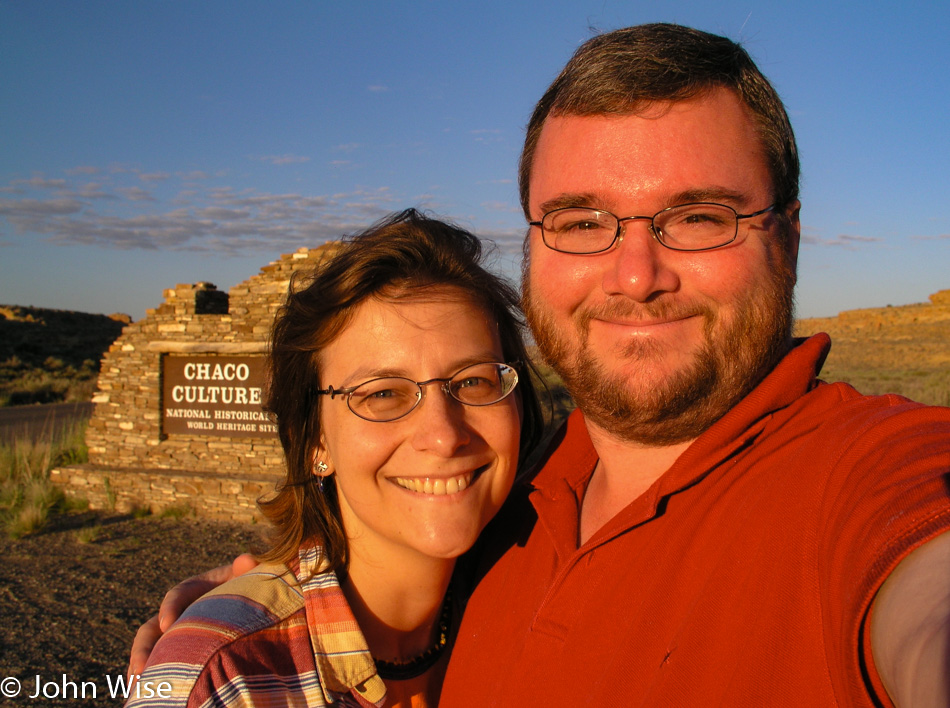
The sun is fully over the horizon by the time we reach the park boundary and start our third visit to Chaco Culture National Historical Park and World Heritage Site. Our previous visits were both back in the year 2000 around the same time of year; click here for the first one and click here for the one a month later where we just had to share this with my mother-in-law, Jutta.
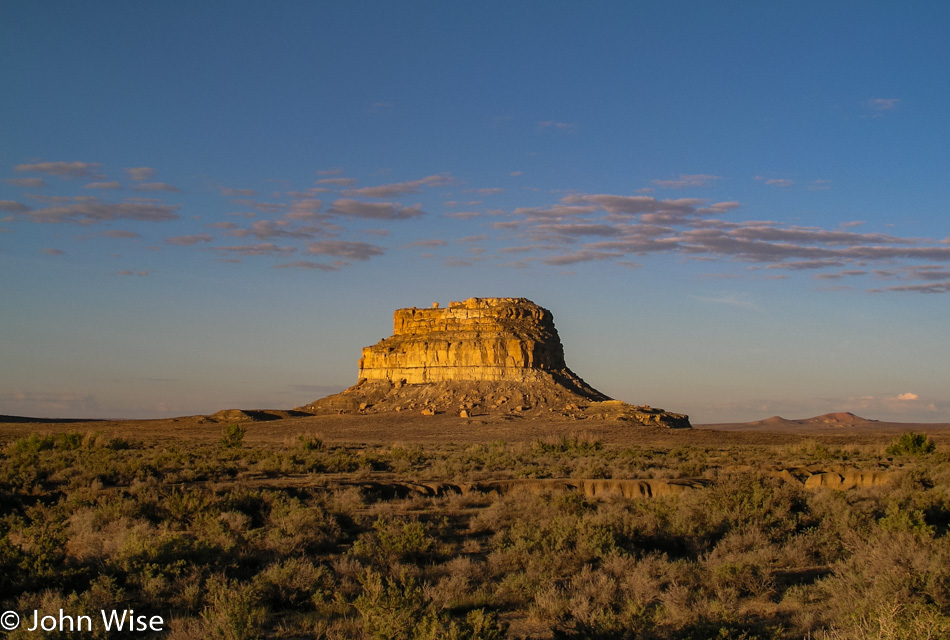
Someday, we’ll hopefully pay that rock known as Fajada Butte out there a visit and explore the mystery of the Anasazi Sun Dagger. Today, though, we are heading up to a different location.
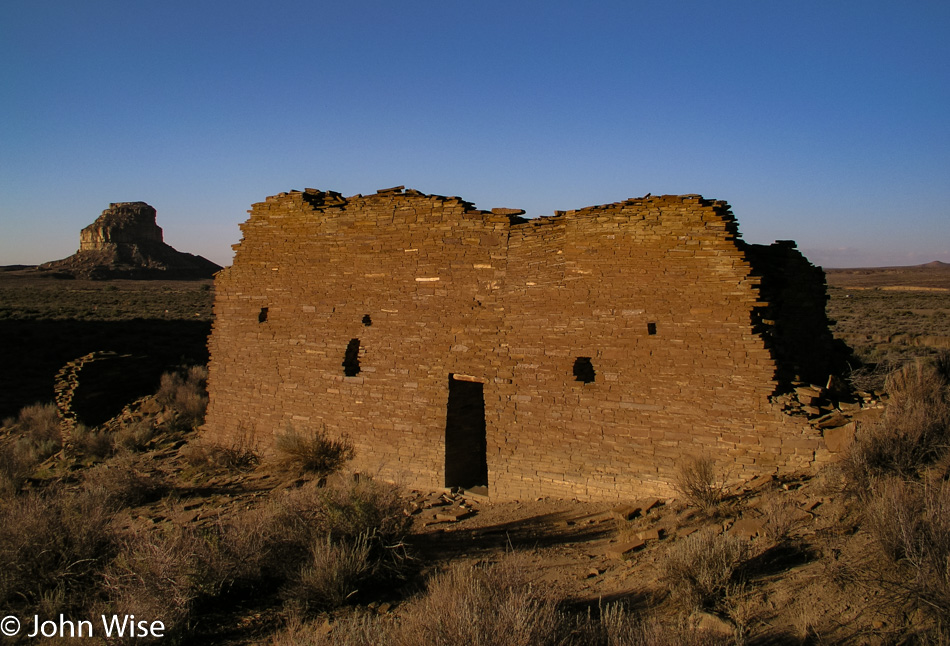
Is this ruin smiling at us?
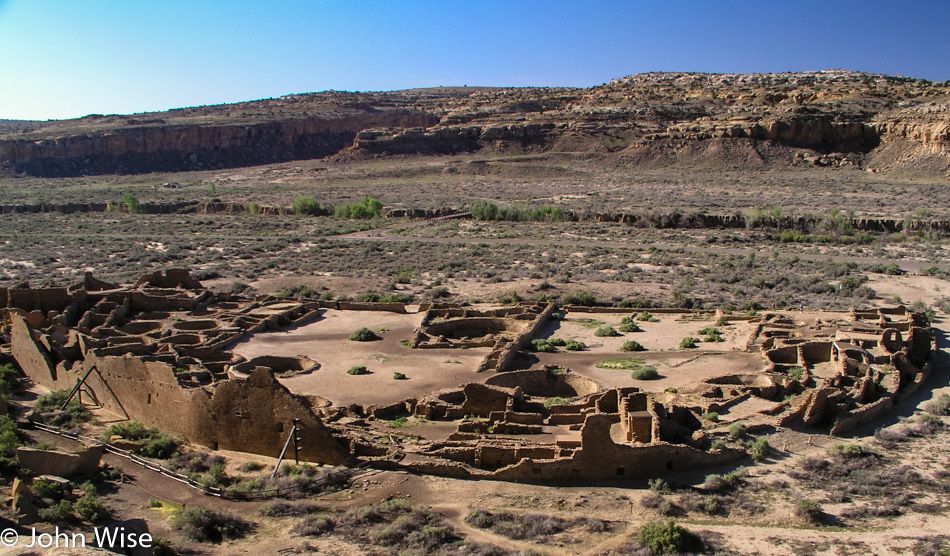
There’s a narrow crack in the cliffside that is the original footpath leading from above to below and vice versa and was used by the earliest visitors to this outpost. Today, we made the time to crawl up through in order to gain this view of Pueblo Bonito.
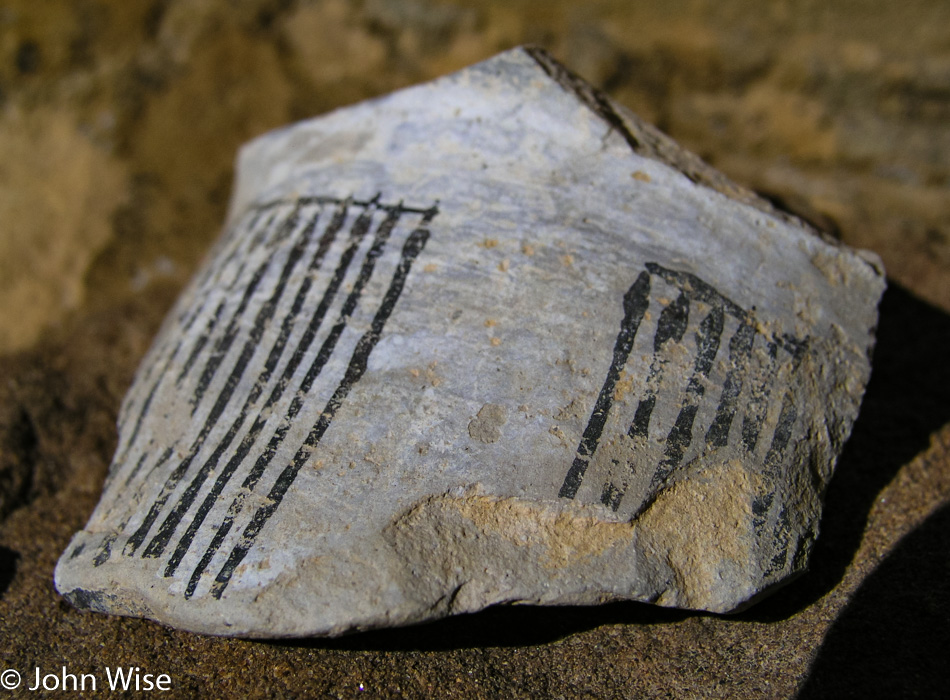
Thank you to everyone polite enough not to scavenge the artifacts that allow us to have a visit of discovery where surprises abound.
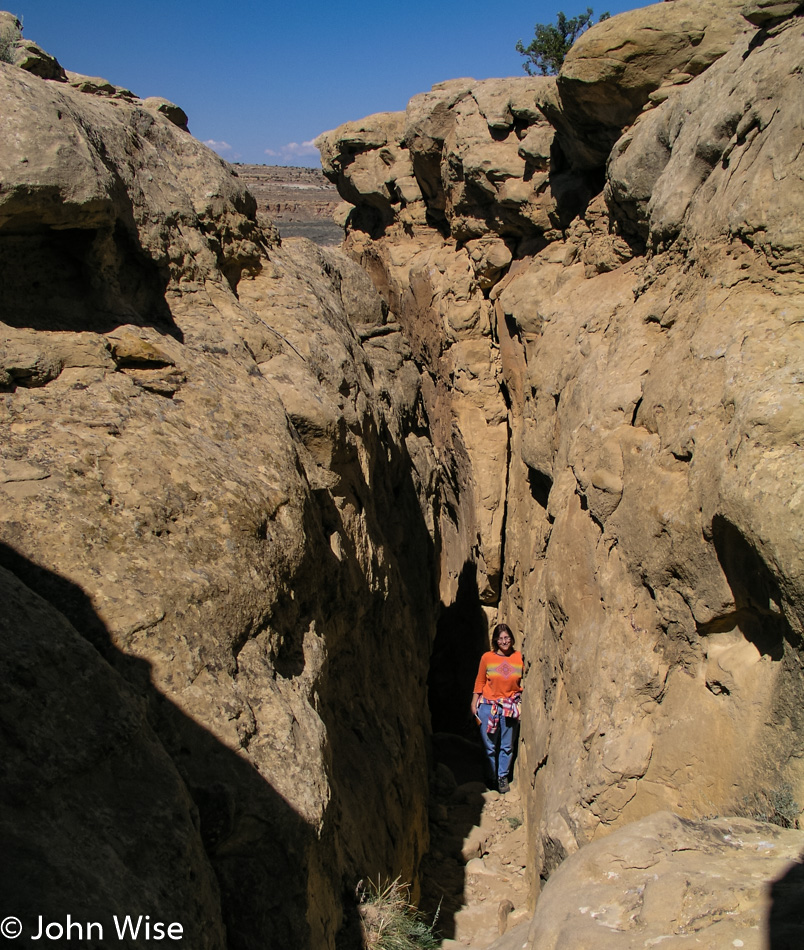
We explored more of the plateau, but how many photos should I post? We are on our way back down.
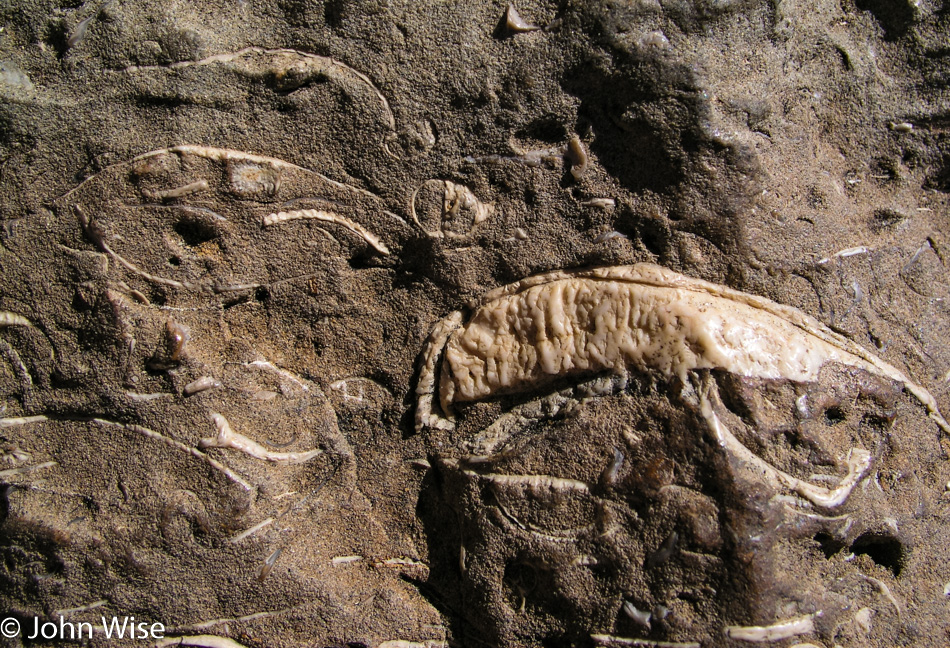
Buried in the sandstone cliffs are reminders that while you may think you are in a desert, the land you walk upon was once seafloor.
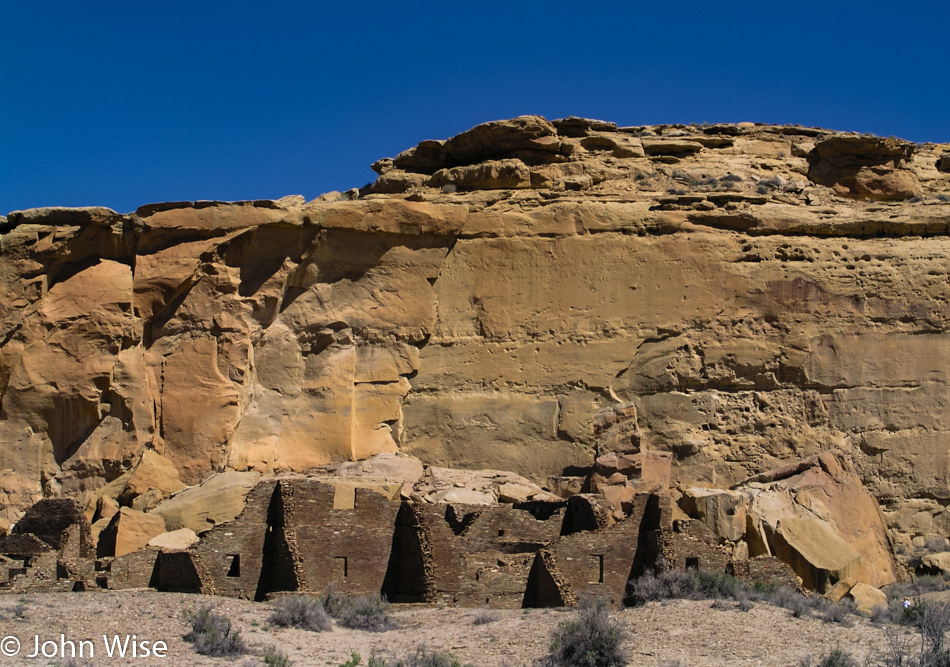
Chaco is an incredible place well off the beaten path and certainly deserves to be a World Heritage Site. There are many things we do not know about this complex of ancient buildings, but I’m thrilled that there are people working to preserve what is here. The Puebloans obviously have a rich history that is practically invisible to us modern inhabitants of their ancestral lands. When will our culture evolve to a point of maturity that allows the Native Americans of North America to trust us?
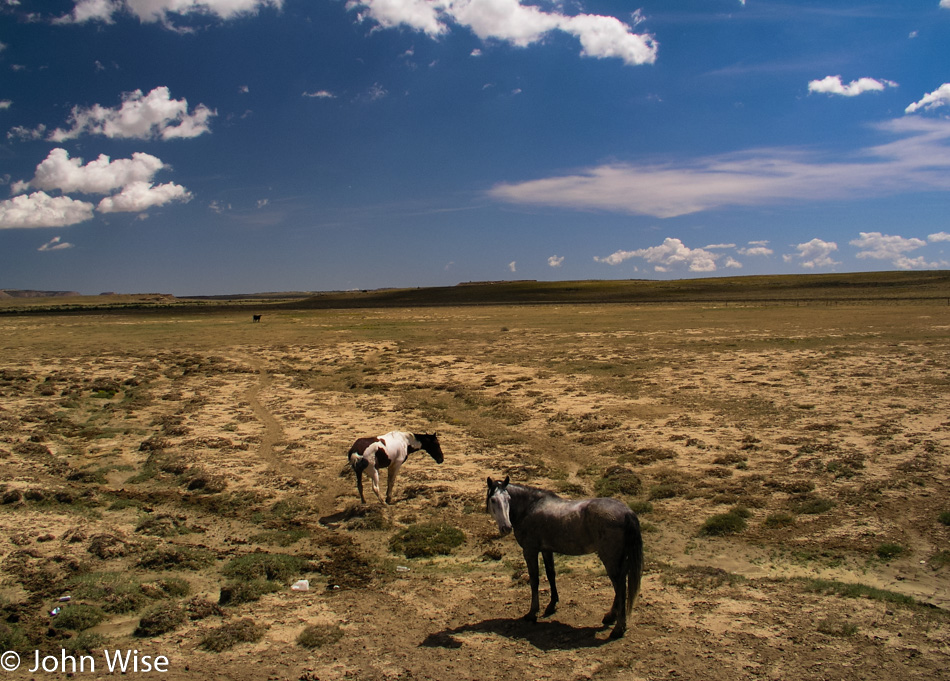
More horses. For some reason or other, horses lend a kind of confidence about a place. They make it more welcoming. Maybe it has to do with the idea that if a horse can live on these lands, then how harsh can this place be?
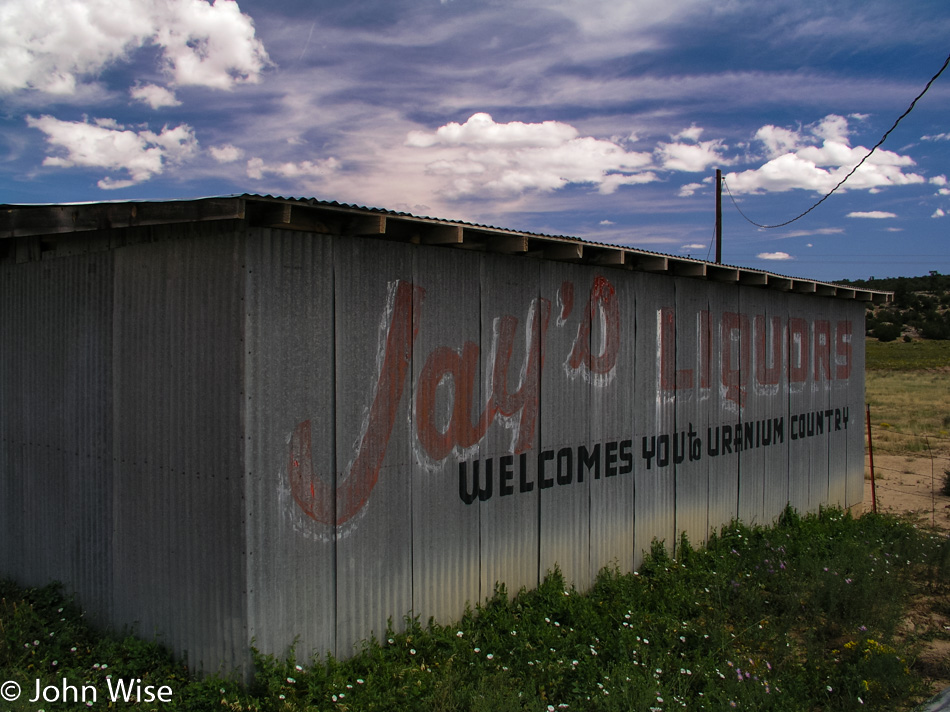
I could take a photo of this building ten more times, and still, I won’t tire of being welcomed to uranium country by a liquor store.
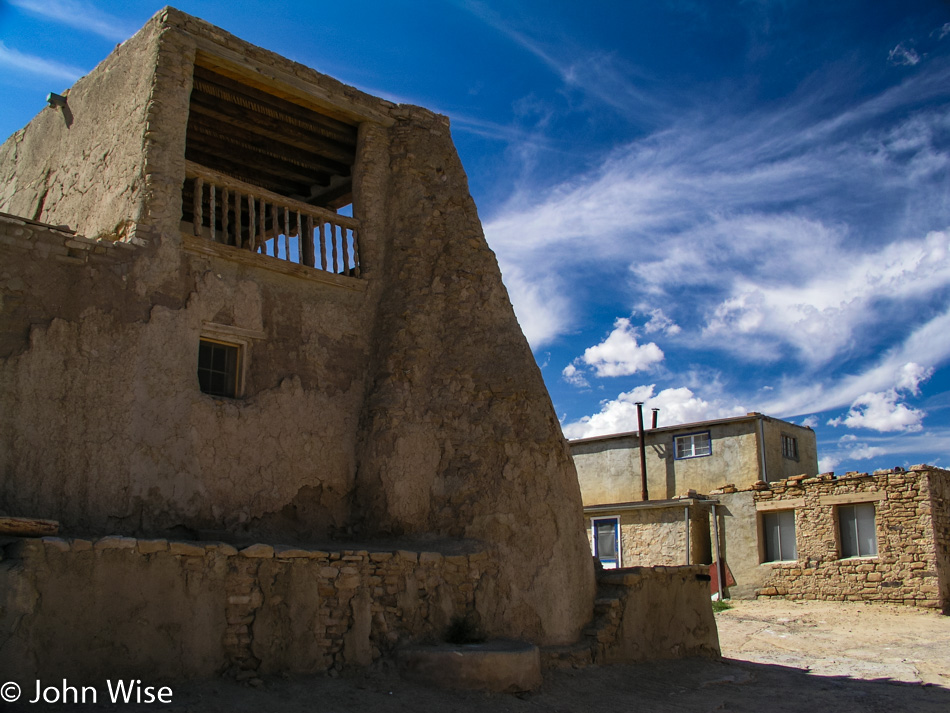
Visiting Acoma Pueblo, also known as Sky City, requires everyone to join an organized tour, and if you plan on taking photos, you’ll need to buy a special permit. The pace through the pueblo is perfect and never felt rushed. We started the tour in the church, but there was no photography allowed within, and as hard as it was, I was respectful of the tribe’s wishes.
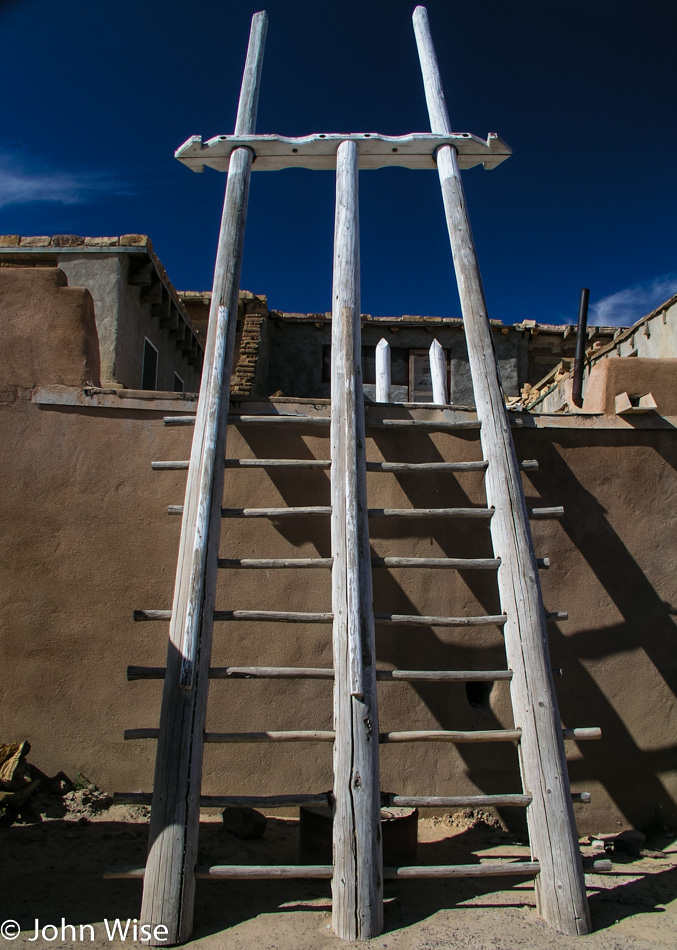
Pardon me on these next photos, as I ran with a heavy hand full of favorites that I just had to post. I find this place more beautiful and serene than anywhere in Beverly Hills or Santa Fe. I’m under no delusion that there could likely be a high level of poverty and maybe even alcohol or other substance abuse going on, but that can happen everywhere. Maybe the people who live here find survival difficult. I can’t know as I don’t have the luxury of chatting with the inhabitants. From my perspective, which is radically different than the one I would have had from my childhood through my thirties, this sky island is an idyllic paradise.
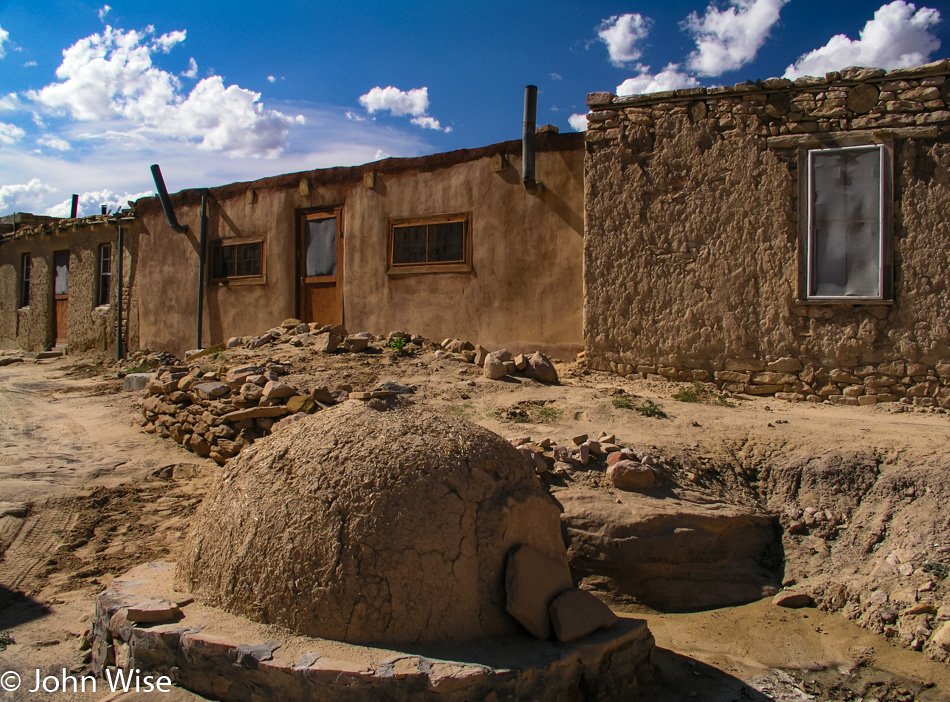
What I wouldn’t give to be here a morning when bread was being baked in this hearth and then head over to the edge of the mesa and, while it’s still steaming hot, break it apart and watch the clouds stream by.
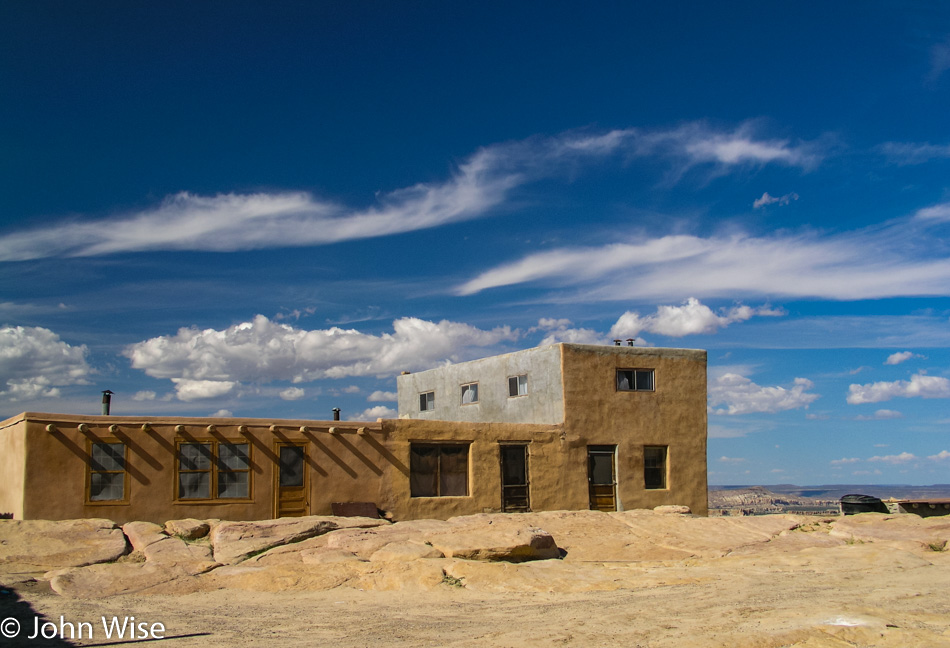
Am I over-romanticizing my perception and casual observations where I imbue these iconic images through the filter of a Western mind that has created a story divorced from reality? Probably. All the same, I’m in love with the utility, simplicity, and place of how it perfectly presents a lifestyle that is as far away from my existence as I could imagine.

As I said earlier, the location is idyllic.
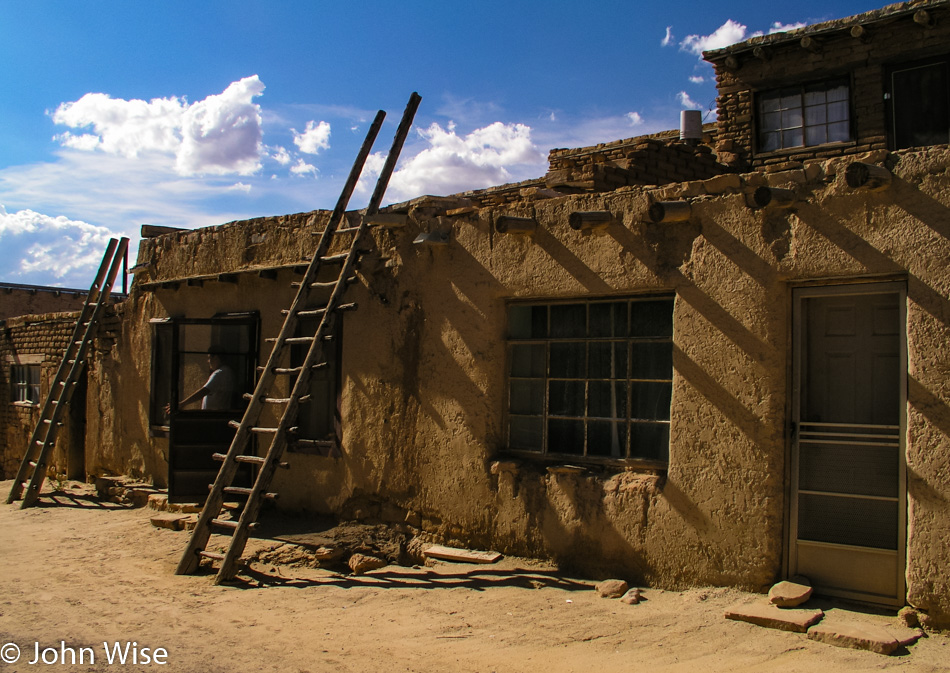
This nearly presented me with a dilemma as you are required to seek permission to take anyone’s photo. This was the second shot I was snapping of these houses and I was snapping the image before I could recognize that a young man was leaving his home. Had he asked if I’d taken his photo and then requested for me to remove it, I would have obliged, but he seemed to shrug it off, and we both continued on our ways.
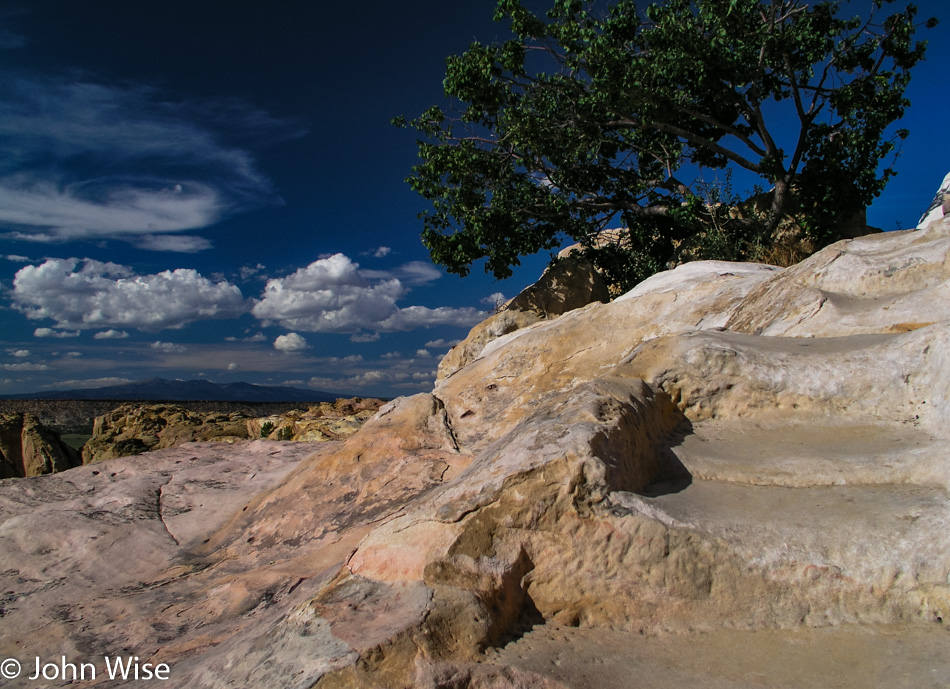
When the guided tour was over, we were welcomed to leave on the road that John Wayne once demanded be carved here while he was working on a film, or we could take the historic route. We opted for the historic route so we could delay the point we had to leave. The narrow trail between some large rocks is well worn, and in some spots, there are toe- and handholds to climb up the rock, and in others, there are stairs as seen on the right of this photo.
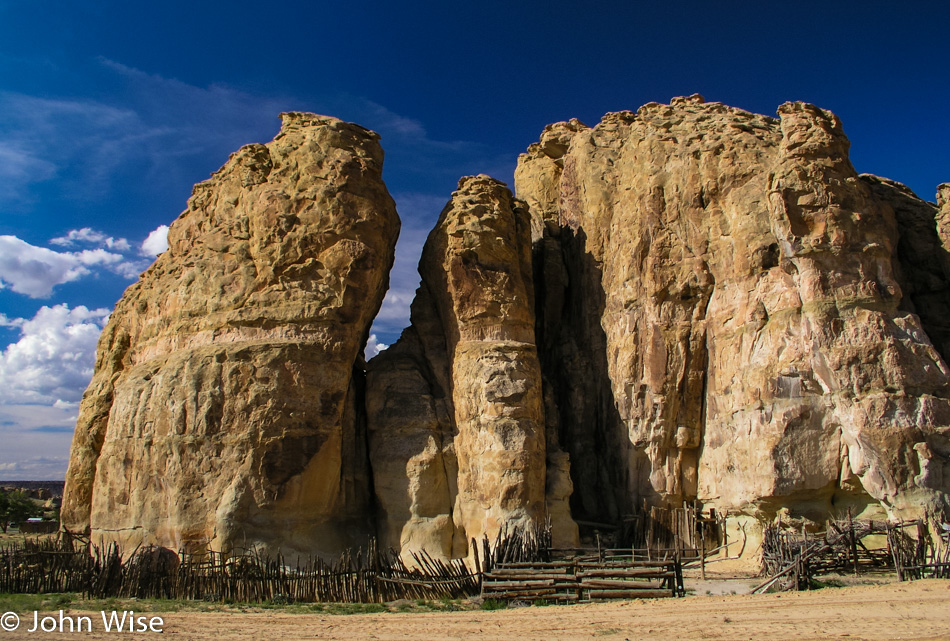
Every corral should be so beautiful.
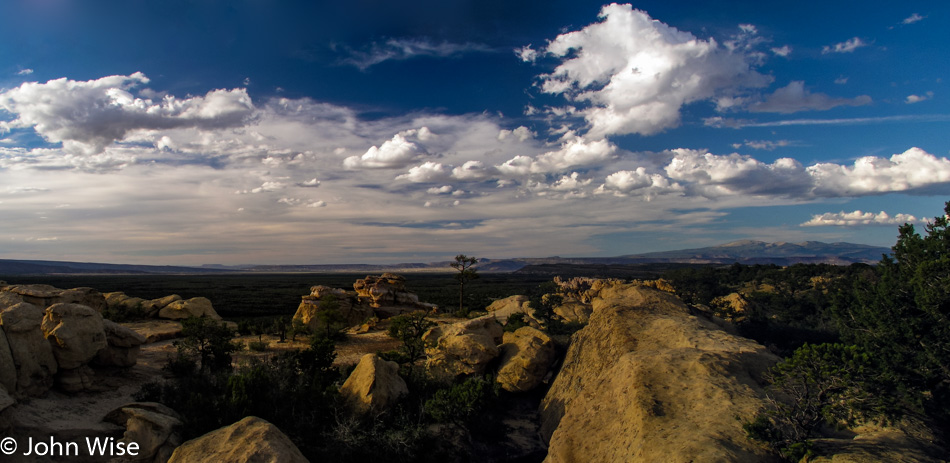
A quick stop into El Malpais National Monument to admire the lava flows and arches before heading to Socorro for an overnight.
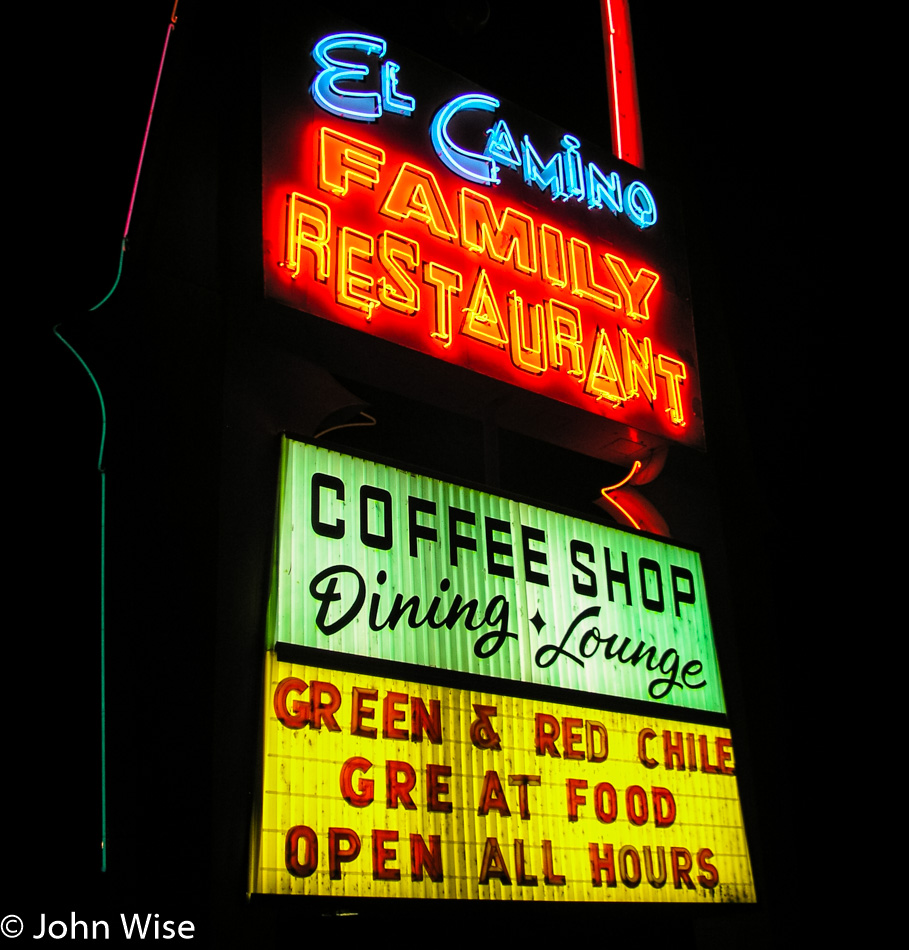
Yep, this is why we are staying in Socorro. Two meals at the El Camino Family Restaurant can’t be beat, even if we eat the exact same thing for dinner and breakfast the next morning. I’m telling you that you are setting a trend with having guacamole for breakfast along with green chili and cheese-smothered steak with beans.
